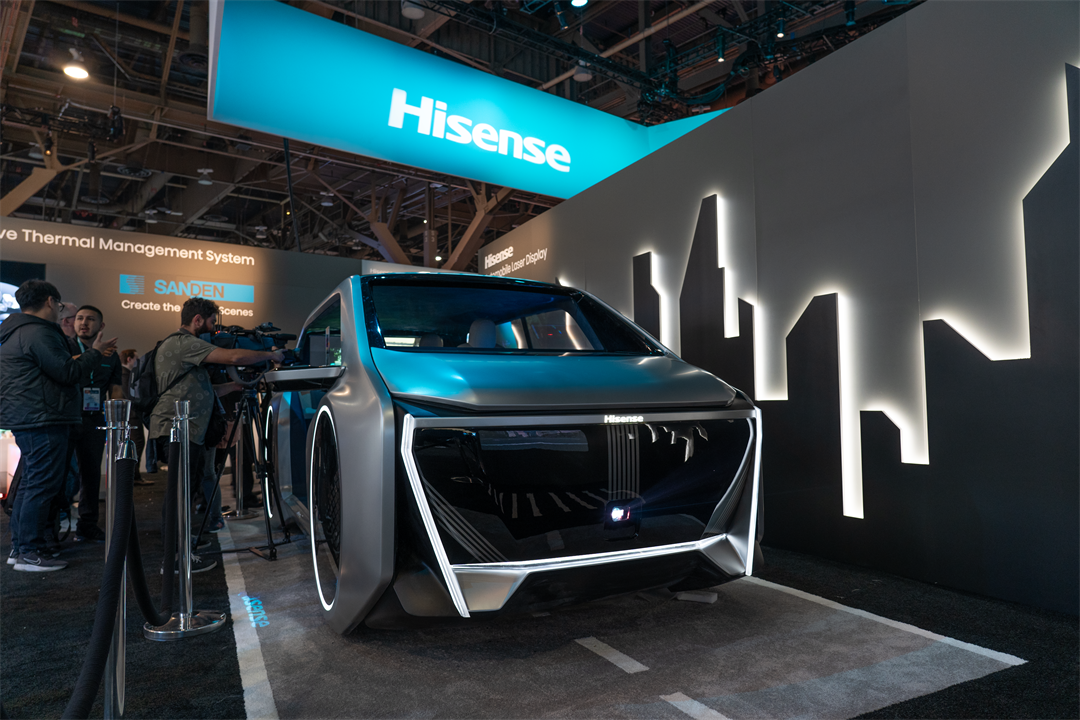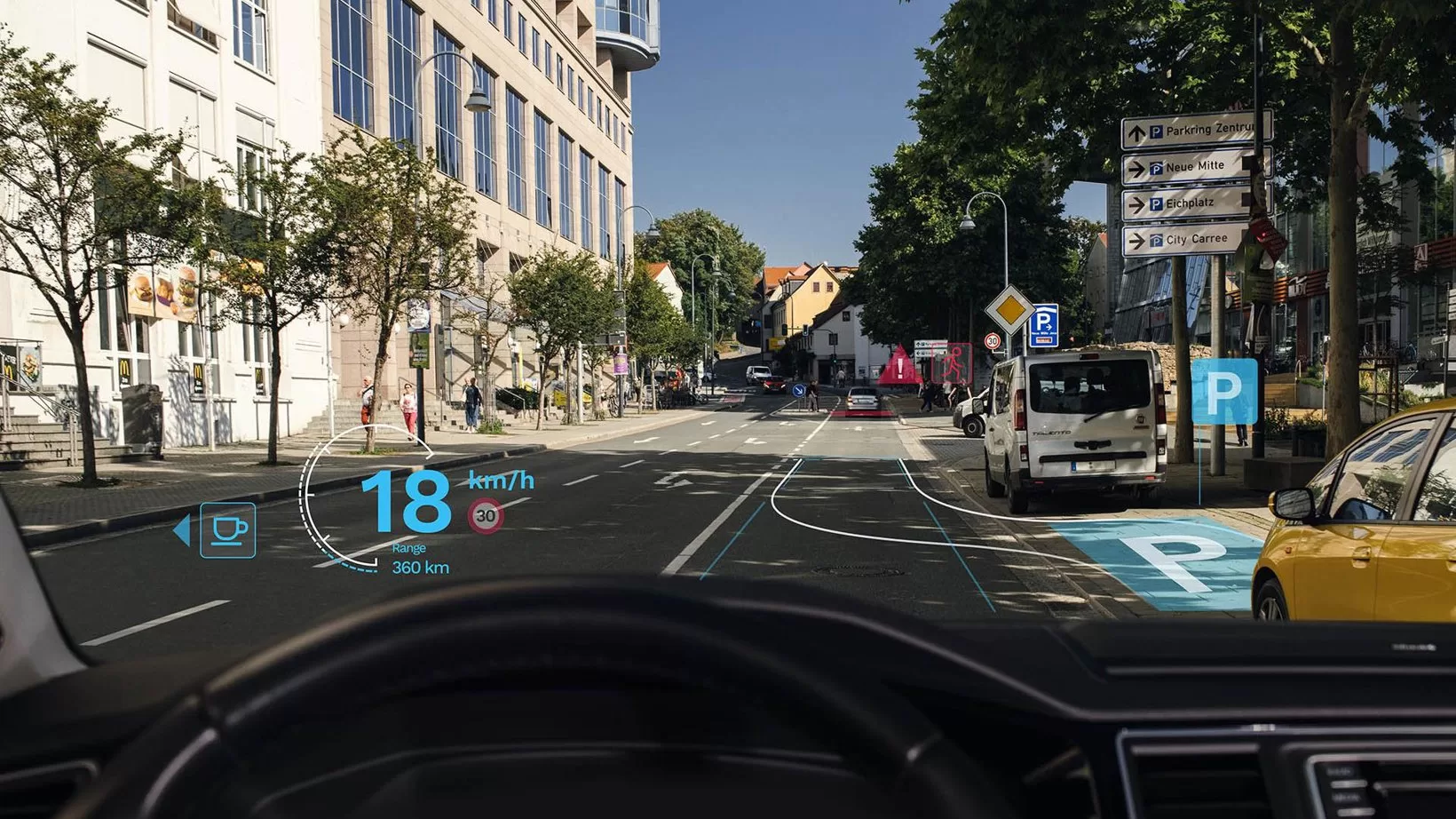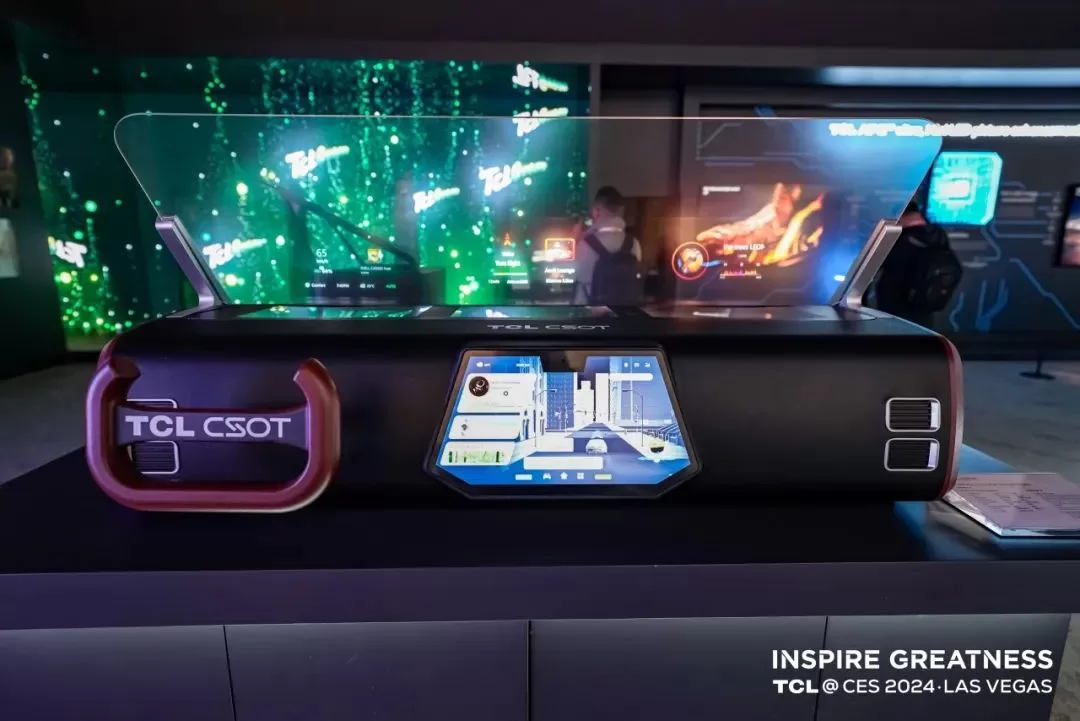The 2024 Consumer Electronics Show in Las Vegas, USA, took place from January 9th to 12th. Looking back at the past year, BMW unveiled the new BMW i emotional interaction concept car Dee at CES 2023, showcasing the future direction of in-car AR-HUD applications by eliminating all large screens inside the car and using an advanced panoramic display system that can cover the entire width of the windshield with projected content.
BMW’s Dee concept car is equipped with the advanced BMW Head-Up Display system; Image source: BMW In the next year, AR-HUD is experiencing rapid development. According to data from the GAC Research Institute, from January to November this year, the cumulative delivery of passenger cars equipped with W/AR-HUD in the Chinese market reached 1.911 million units, a year-on-year increase of 56.24%. Although W-HUD is still mainstream, with the mature application of AR-HUD product technology, the volume of new car installations has increased by 159.24% year-on-year, and the market share has also increased by 3.8 percentage points compared to the same period last year, reaching 9.57%. It is worth noting that according to incomplete statistics from the GAC Research Institute, by 2023, more than 120 new models will be launched in China. Excluding models below 100,000 yuan (14060$), the analysis of their sub-models shows that 14.9% are equipped with AR-HUD, including popular models such as the WENJIE M9, Geely 007, FAW-Volkswagen ID.7 VIZZION, Deep Blue S7, and Geely X. Under this trend, more and more companies at this CES exhibition are focusing on in-car displays, not only traditional HUD technology providers, but also a large number of consumer electronics companies entering the automotive electronics field. Previously, the GAC Research Institute summarized the participation of foreign technology providers in the exhibition, and this article mainly focuses on the technical highlights of HUD displays. Hisense: Automotive laser holographic AR-HUD For most people, Hisense is not a strange brand, but their recognition is more in the field of home appliances and automotive thermal management. However, during this CES, they won two “CES Innovation Awards”, and the automotive laser display product is one of them.

According to data, Hisense, as one of the leading brands in global laser display technology, showcased laser car display products including automotive laser holographic AR-HUD and laser panoramic projection. The AR-HUD, combined with laser phase and spectral tuning technology, provides high resolution, excellent transparency, longer projection distance, and wider viewing angle, turning the windshield into an information center, allowing drivers to simultaneously observe virtual images and the real environment. Zeiss: Holographic technology can be applied to any glass surface As an internationally leading technology company in the field of optics and optoelectronics, Zeiss Group unveiled a new holographic technology at CES 2024, planning to apply it in the automotive, imaging, and lighting fields.

Zeiss holographic technology applied to the front windshield; image source: Zeiss According to the official introduction, the core of this technology is a transparent thin layer, ultra-precision optical components are installed in a very small space, and can achieve a transparency of over 98%, while maintaining the highest clarity. Its appearance enables holographic technology to be applied to areas previously restricted by installation space, weight, and cost, including building windows, transparent screens, or car side windows, making them communicative screens. Zeiss officials pointed out that in the past, holographic technology could only be produced in small batches. With the replication technology developed by Zeiss laboratories, industrial-scale holographic smart glass production will be achieved for the first time. Goer shares: PGU module PGU4620 Gen2 for car AR-HUD For AR-HUD technology, it would be a great pity if the industry leader in the VR/AR field is absent, but obviously Goer will not miss out. At this CES exhibition, in addition to focusing on the metaverse, acoustics, microelectronics, smartwatches, and smart home fields, Goer also focused on the automotive field, exhibiting the PGU module PGU4620 Gen2 and freeform mirrors and cold mirrors for car AR-HUD. Among them, the brightness of PGU4620 Gen2 reaches 200lm, with a high refresh rate of 120Hz, high contrast ratio of 1800:1, and wide color gamut.

In fact, Goer has been developing and manufacturing micro-projector devices and modules since 2017, and in early 2023, it released a new generation of car AR-HUD PGU modules based on DLP technology, accelerating its development in the automotive intelligent cockpit optical field. According to the data at that time, the PGU module uses the latest DMD CHIP developed by TI, the optical components are made of glass, and the body is made of metal for better durability and scalability. The volume is only 0.3L, about 10%-15% smaller than similar products. The resolution has been increased by nearly 20%, providing a better field of view and improving the overall display effect of HUD. It also provides a programmable interface for automatic white balance adjustment, helping HUD manufacturers shorten time to market by simplifying configuration. As for the PGU4620 Gen2, in the future, GoerTek will continue to produce PGU modules with better quality and smaller size to improve the driving safety of intelligent cockpits, ensuring a more intuitive and immersive interaction. Jujutek: HUD with 384 dimming zones On January 10th, the world’s leading LED driver chip technology company, at CES 2024, cooperated with Lingyang Technology to demonstrate a car head-up display system using the area dimming LED backlight driver chip-MBI6353Q, to enhance the advantages of the head-up display, including high brightness and a wide output current range, flexible dimming areas, mixed dimming technology, and excellent low gray performance.

Car head-up display with regional dimming feature; Image source: Jujutech The HUD has 384 dimming zones, creating more precise and localized dimming effects, and providing high-contrast images, ensuring that all displayed information is easily visible under any lighting conditions. CarUX: The world’s first hidden car display CarUX, a subsidiary of Chunghwa Picture Tubes, will showcase the world’s first privacy technology and InvisiView hidden display at CES 2024 in Las Vegas from January 9th to 12th, as well as other breakthrough automotive display products and technologies. In addition to the world’s first display with active privacy view technology – a 55-inch regional dimming car display, CarUX also introduced the 12.3-inch reflective PHUD smart cockpit concept to keep up with the trend of smart cockpits and car-to-everything technology. The main information of the vehicle, including speed, time, entertainment, navigation, and images, can be projected onto the dashboard or windshield, providing a more comfortable experience for drivers and passengers, and improving driving safety. TCL Huaxing: The world’s largest Micro LED HUD car display At CES 2024, TCL Huaxing showcased a complete product line including AR/VR, mobile phones, tablets, laptops, displays, commercial displays, car displays, and TVs. Among them, the company’s focus was on the demonstration of printed OLED technology, as well as the latest products in the car display business. This includes a leading global composite functional driver’s cockpit model, integrating various car display applications, including a 42.7-inch large irregular car integrated display, a 10.1-inch smart transparent OLED touch screen, a 5.1-inch TFT LCD AR-HUD, and a 14-inch high screen-to-body ratio ultra-thin flexible OLED display.

Looking to the future, TCL Huaxing sees great potential for Micro LED in car HUD applications. They believe that Micro LED has the characteristics of high precision, high brightness, and long lifespan. Especially in the harsh environment of car displays, where weather resistance and reliability are crucial, Micro LED should be a better solution. At this year’s CES, they also showcased the world’s largest Micro LED HUD car display, which has also received a lot of attention. AU Optronics: Bringing next-generation Micro LED technology to cars At the same time, major display panel manufacturer AU Optronics also showcased a series of car display HMI solutions at this year’s CES, covering the ultimate display technology of Micro LED, creating smart cockpits, and expanding diverse applications for human-machine interaction. As the next generation of information technology rapidly develops, the definition of cars is being rewritten, and people are beginning to expect higher levels of comfort, safety, efficiency, and consumer electronics features in their cars. Looking at the market, more and more mainstream new cars are promoting “smart cockpits” as a selling point, in order to meet the increasing demand from consumers for cars as intelligent terminals. In this trend, with more and more elements of intelligence, advanced technologies such as autonomous driving and car connectivity are becoming increasingly mature in car applications, and smart cockpits will ultimately become the third living space for people. In this context, AU Optronics is committed to introducing Micro LED technology to reshape cockpit design concepts, including interactive transparent smart car windows, retractable rear seat entertainment displays, and hidden operation buttons on the steering wheel, integrating intuitive steering wheel touch displays and immersive panoramic HUD. This design not only conforms to ergonomic principles, enhances the aesthetics of the steering wheel, but also allows the driver to visually see the control status of the air conditioning system or volume on the windshield, strengthening the safety of driving. Furthermore, by integrating a hidden central control human-machine interface, this design can be combined with the cockpit trim, presenting different textures and seamlessly blending the display with the cockpit trim. When the functions are in use, this design can create aesthetic effects in cockpit design.